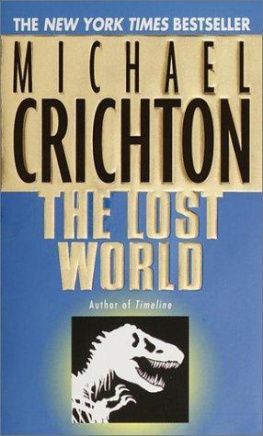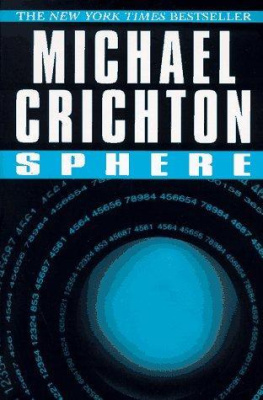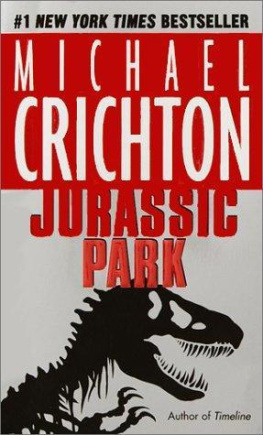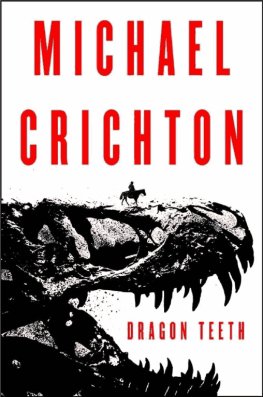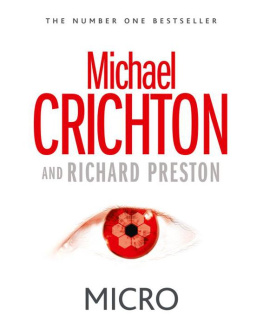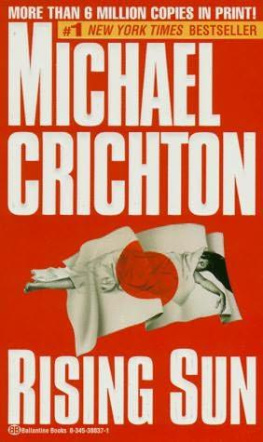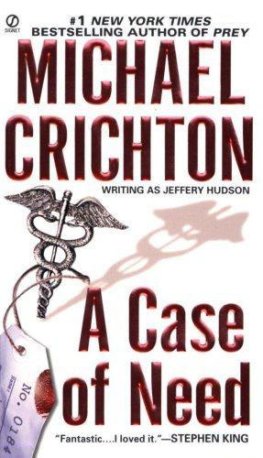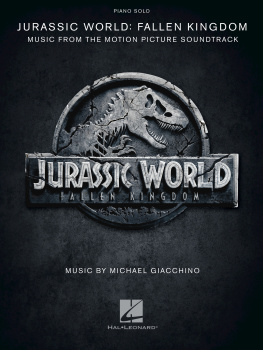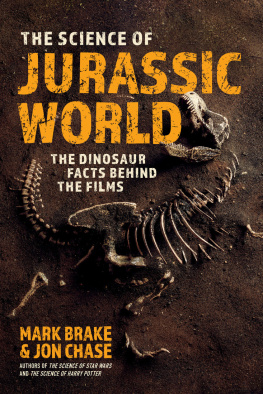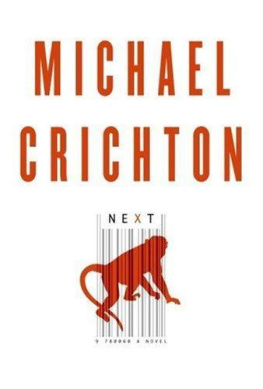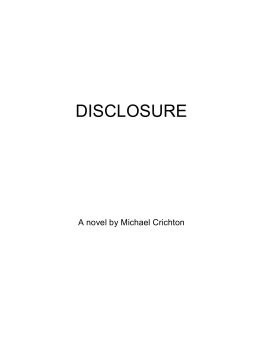Michael Crichton - The Lost World
Here you can read online Michael Crichton - The Lost World full text of the book (entire story) in english for free. Download pdf and epub, get meaning, cover and reviews about this ebook. year: 1995, publisher: Knopf, genre: Art. Description of the work, (preface) as well as reviews are available. Best literature library LitArk.com created for fans of good reading and offers a wide selection of genres:
Romance novel
Science fiction
Adventure
Detective
Science
History
Home and family
Prose
Art
Politics
Computer
Non-fiction
Religion
Business
Children
Humor
Choose a favorite category and find really read worthwhile books. Enjoy immersion in the world of imagination, feel the emotions of the characters or learn something new for yourself, make an fascinating discovery.
- Book:The Lost World
- Author:
- Publisher:Knopf
- Genre:
- Year:1995
- Rating:4 / 5
- Favourites:Add to favourites
- Your mark:
- 80
- 1
- 2
- 3
- 4
- 5
The Lost World: summary, description and annotation
We offer to read an annotation, description, summary or preface (depends on what the author of the book "The Lost World" wrote himself). If you haven't found the necessary information about the book — write in the comments, we will try to find it.
The Lost World — read online for free the complete book (whole text) full work
Below is the text of the book, divided by pages. System saving the place of the last page read, allows you to conveniently read the book "The Lost World" online for free, without having to search again every time where you left off. Put a bookmark, and you can go to the page where you finished reading at any time.
Font size:
Interval:
Bookmark:
TheLostWorld
The Lost World
Michael Crichton
CENTURY
Published by Century Books in 1995
1 3 5 7 9 10 8 6 4 2
(c) Michael Crichton 1995
Endpaper map copyright (c) David Cain 1995
Endpaper dinosaur illustrations (c) Gregory Wenzel 1995
The right of Michael Crichton has been asserted under the Copyright, Designs and
Patents Act, 1988 to be identified as the author of this work
This book is sold subject to the condition that it shall not, by way of trade or otherwise, be lent, resold, hired out, or otherwise circulated without the publisher's prior consent in any form of binding or cover other than that in which it is published and without a similar condition including this condition being imposed on the subsequent purchaser
First published in the United Kingdom by
Century Books
Random House UK Limited
20 Vauxhall Bridge Road, London, SW1V 2SA
Random House, Australia (Pty) Limited
20 Alfred Street, Milsons Point, Sydney,
New South Wales 2061, Australia
Random House New Zealand Limited
18 Poland Road, Glenfield, Auckland 10, New Zealand
Random House South Africa (Pry) Limited
PO Box 337, Bergvlei, South Africa
Random House UK Limited Reg. No. 954009
A CIP catalogue record for this book is available
from the British Library
Papers used by Random House UK Limited are natural, recyclable products made from wood grown in sustainable forests. The manufacturing processes conform to the environmental regulations of the country of origin.
ISBN 0 7126 76902
Printed and bound in Great Britain by
Mackays of Chatham PLC, Chatham, Kent
To Carolyn Conger
What really interests me is whether God had any choice in the creation of the world.
ALBERT EINSTEIN
Deep in the chaotic regime, slight changes in structure almost always cause vast changes in behavior. Complex controllable behavior seems precluded.
STUART KAUFFMAN
Sequelae are inherently unpredictable.
IAN MALCOLM
Introduction:
Extinction at the K-T Boundary
The late twentieth century has witnessed a remarkable growth in scientific interest in the subject of extinction.
It is hardly a new subject - Baron Georges Cuvier had first demonstrated that species became extinct back in 1786, not long after the American Revolution. Thus the fact of extinction had been accepted by scientists for nearly three-quarters of a century before Darwin put forth his theory of evolution. And after Darwin, the many controversies that swirled around his theory did not often concern issues of extinction.
On the contrary, extinction was generally considered as unremarkable as a car running out of gas. Extinction was simply proof of failure to adapt. How species adapted was intensely studied and fiercely debated. But the fact that some species failed was hardly given a second thought. What was there to say about it? However, beginning in the 1970s, two developments began to focus attention on extinction in a new way.
The first was the recognition that human beings were now very numerous, and were altering the planet at a very rapid rate-eliminating traditional habitats, clearing the rain forest, polluting air and water, perhaps even changing global climate. In the process, many animal species were becoming extinct. Some scientists cried out in alarm; others were quietly uneasy. How fragile was the earth's ecosystem? Was the human species engaged in behavior that would eventually lead to its own
extinction?
No one was sure. Since nobody had ever bothered to study extinction in an organized way, there was little information about rates of extinction in other geological eras. So scientists began to look closely at extinction in the past, hoping to answer anxieties about the present.
The second development concerned new knowledge about the death of the dinosaurs. It had long been known that all dinosaur species had become extinct in a relatively short time at the end of the Cretaceous era, approximately sixty-five million years ago. Exactly how quickly those extinctions occurred was a subject of long-standing debate: some paleontologists believed they had been catastrophically swift, others felt the dinosaurs had died out more gradually, over a period of ten thousand to ten million years - hardly a rapid event.
Then, in 1980, physicist Luis Alvarez and three coworkers discovered high concentrations of the element iridium in rocks from the end of the Cretaceous and the start of the Tertiary - the so-called K-T boundary. (The Cretaceous was shorthanded as K to avoid confusion with the Cambrian and other geological periods.) Iridium is rare on earth, but abundant in meteors. Alvarez's team argued that the presence of so much iridium in rocks at the K-T boundary suggested that a giant meteorite, many miles in diameter, had collided with the earth at that time. They theorized that the resulting dust and debris had darkened the skies, inhibited photosynthesis, killed plants and animals, and ended the reign of the dinosaurs.
This dramatic theory captured the media and public imagination. It began a controversy which continued for many years. Where was the crater from this meteor? Various candidates were proposed. There were five major periods of extinction in the past-had meteors caused them all? Was there a twenty-six-million-year cycle of catastrophe? Was the planet even now awaiting another devastating impact?
After more than a decade, these questions remained unanswered. The debate raged on - until August 1993, when, at a weekly seminar of the Santa Fe Institute, an iconoclastic mathematician named Ian Malcolm announced that none of these questions mattered, and that the debate over a meteoric impact was a frivolous and irrelevant speculation.
Consider the numbers, Malcolm said, leaning on the podium, staring forward at his audience. On our planet there are currently fifty million species of plants and animals. We think that is a remarkable diversity, yet it is nothing compared to what has existed before. We estimate that there have been fifty billion species on this planet since life began. That means that for every thousand species that ever existed on the planet, only one remains today. Thus 99.9 percent of all species that ever lived are extinct. And mass killings account for only five percent of that total. The overwhelming majority of species died one at a time.
The truth, Malcolm said, was that life on earth was marked by a continuous, steady rate of extinction. By and large, the average lifespan of a species was four million years. For mammals, it was a million years. Then the species vanished. So the real pattern was one of species rising, flourishing, and dying out in a few million years. On average, one species a day had become extinct throughout the history of life on the earth.
But why? he asked. "What leads to the rise and decline of earth's species in a four-million-year life cycle?
"One answer is that we do not recognize how continuously active our planet is. just in the last fifty thousand years - a geological blink of an eye - the rain forests have severely contracted, then expanded again. Rain forests aren't an ageless feature of the planet; they're actually rather new. As recently as ten thousand years ago, when there were human hunters on the American continent, an ice pack extended as far down as New York City. Many animals became extinct during that time.
"So most of earth's history shows animals living and dying against a very active background. That probably explains 90 percent of extinctions. If the seas dry up, or become more salty, then of course ocean plankton will all die. But complex animals like dinosaurs are another matter, because complex animals have insulated themselves - literally and figuratively - against such changes. Why do complex animals die out? Why don't they adjust? Physically, they seem to have the capacity to survive. There appears to be no reason why they should die. And yet they do.
Font size:
Interval:
Bookmark:
Similar books «The Lost World»
Look at similar books to The Lost World. We have selected literature similar in name and meaning in the hope of providing readers with more options to find new, interesting, not yet read works.
Discussion, reviews of the book The Lost World and just readers' own opinions. Leave your comments, write what you think about the work, its meaning or the main characters. Specify what exactly you liked and what you didn't like, and why you think so.

